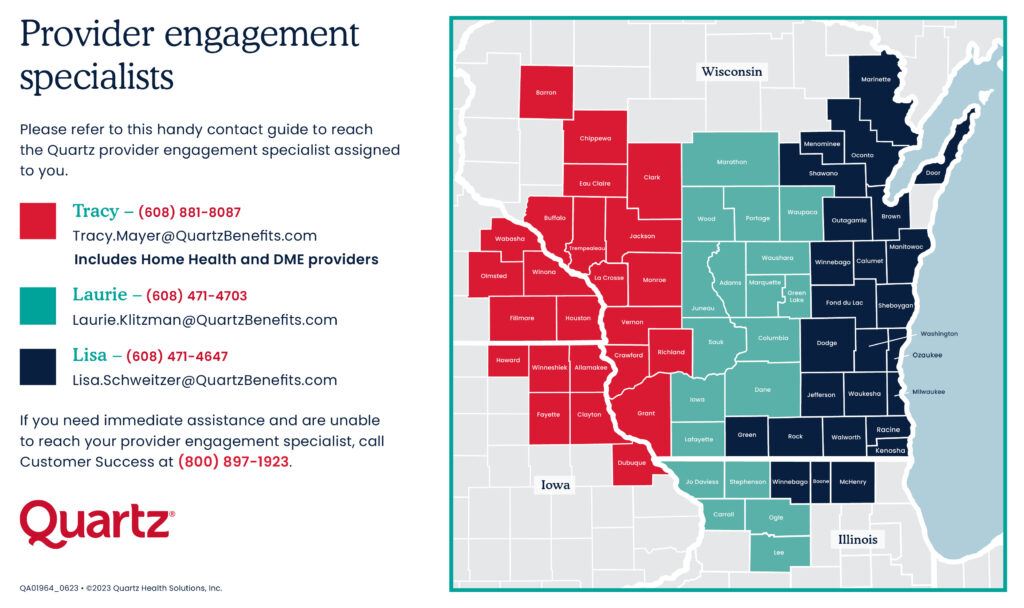Provider Manual & Resources
At Quartz, we’re doing our part to help you provide quality care for your patients.
We work to streamline and simplify your job with a range of user-friendly technologies and resources.
Quartz Provider Manual
The Quartz Provider Manual is available for you to download. The manual provides information to providers of our Quartz Medicare Advantage, BadgerCare Plus, and Quartz Health Solutions Commercial plans.
Provider Training
Dual Special Needs Plans (D-SNP) PowerPoint | Audio
ePA Program
The ePA program allows providers to initiate prior authorizations in the patient’s electronic medical record; for more information, visit the OptumRx website.
BadgerCare Plus Member Grievance and Ombuds
- Ombuds for BadgerCare Plus and SSI Medicaid HMO Members
- HMO and PIHP Member Grievances and Appeals Guide

Utilization Management & Hospital Admissions
Utilization Management (UM) assists members in obtaining quality health care in the most efficient and economical manner. Quartz has a utilization management program to protect members from unnecessary costs and to help Quartz be a good steward of plan resources for all members. A variety of processes are in place to evaluate the utilization and quality of health care services provided to Quartz members. All the Utilization Management (UM) programs are supported by qualified health professionals and physicians whose education, training and experience are commensurate with the UM reviews they conduct.